Over the course of several years, I've amassed quite the collection of various wide angle lenses. These all varied from 10mm up to 40mm lens. Some were zooms, while others were primes.
Currently my two favourite lenses is my S
amyang 14mm F/2.8 IF ED MC Aspherical and my Canon EF 24mm F/1.4L USM II.
This list is meant to be a summary and a little short tidbit of the benefits and problems of each lens. All photos by me with write-ups on some pros and cons of each lens. There's plenty of reviews out there so this is merely a snapshot of each lens with my opinion of how they work in the field and how they kind of compare to each other. I will be updating this list from time to time as there's another half dozen lenses that I've not listed in here. Check back occasionally:
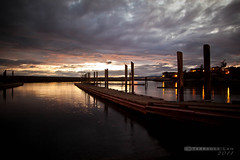 |
| 24mm F/1.4L II |
 |
| 24mm F/1.4L II |
|
24mm F/1.4L USM II
24mm in my landscape stuff is perfect (nothing is sharper than this lens and only equalled by the 24mm TS-E which has extra movements for geometric corrections).
Pros: Sharp, great light gathering capabilities low distortion, Great for landscapes, environmental portraits, general purpose shooting, street photography, takes 77mm filters, and very fast and quiet USM motor.
Cons: Vignettes wide open, some longitudinal CA, not ideal for portrait work, distortion, expensive
|
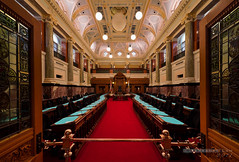 |
| Samyang 14mm Geometrically Corrected |
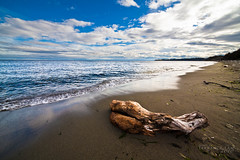 |
| Samyang 14mm F/2.8 |
| Samyang 14mm F/2.8 IF ED MC Aspherical
14mm is an awesome ultra wide that is best suited for interiors but can be used for landscape when there's lots going on in that 120 degrees field of view (and should be scenes where you don't mind the natural perspective distortion). I use this lens for many interior projects.
Pros: One of the widest full frame primes out there. Super sharp edge to edge unlike all competitors. Can be used for geometric correctable applications where tilt-shift lenses are normally used. Very easy lens to focus even though it's a manual lens
Cons: Suffers from a moustache distortion (correctable in software). Does not accept conventional filters. Some mild vignetting wide open. Completely manual function lens which may cause some metering errors in modern Digital cameras.
|
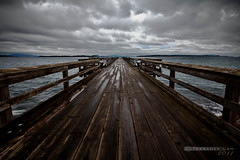 |
| Canon TS-E 17mm |
 |
| Canon TS-E 17mm |
 |
| Canon TS-E 17mm |
| Canon TS-E 17mm F/4L
A 17mm tilt-shift is great for critical sharpness on deep depth of field architectural (like big foyers such as the example). It is much, much harder to use for landscape, but the results are pretty nice when you nail it (but same issues as a 14mm, being a bit too wide if your subjects are just big open spaces). This is truly a specialists lens and really designed for very specific parameters. Not an easy lens to use or master.
Pros: offers maximum flexibility for geometric correction and selective depth of field. Super sharp lens from corner to corner. Built very well, and offers a full range of motion. Great for interiors or architecture.
Cons: a bit too wide for landscapes with big open spaces. Very specific to certain applications. A little bit of CA in the corners, and the exposure differences at the edges when doing extreme shifts may cause uneven exposures. Huge learning curve, and even longer time to master this lens. It requires a lot of set-up time, and you do need some sort of focusing aid or tether to take full advantage of this lens.
|
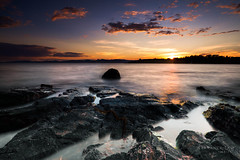 |
| Canon 17-40mm F/4L USM |
| Canon 17-40mm F/4L USM
This lens is a great overall performer. Although it may not have the edge to edge performance of the primes it is a very versatile lens if you can't decide if you need a wide angle or an ultra-wide angle. In some ways this lens actually performs better than it's twice as expensive cousin the 16-35 F/2.8 II especially when it is stopped down.
Pros: A very flexible wide to ultra-wide angle zoom. Excellent build quality. Takes both filters in the front (77mm) and rear gel filters. One of the most inexpensive L series lens.
Cons: CA and soft in the corners (quite a bit of it is reduced when stopped down), minor barrel distortion, requires more expensive low profile filters.
|
 |
| Canon 16-35mm F/2.8L USM II |

| Canon 16-35mm F/2.8L USM II
This used to be my bread and butter lens. I used it a lot for all sorts of applications from doing my landscape photography to my professional architectural work. Keeping things in perspective despite it's issues, none of my clients have ever expressed issues with images from this lens, so if you're looking for a lens that works across multiple applications, this is a great zoom lens choice. It offers a few additional advantages over the 17-40 lens, by being slightly wider, faster aperture which makes it great for environmental portraits, some slightly better flare control.
Pros: Fast F/2.8 lens, quiet USM, flexible wide to ultra-wide angle zoom. Excellent build quality. Suitable for environmental portraits, and also for doing geometric corrected images.
Cons: CA and soft in the corners (even at F/11), minor barrel distortion, requires very expensive low profile 82mm filters, requires very expensive and very large medium format sized square filters, heavy, expensive compared to it's competitors.
|
 |
| Sigma 12-24 F/4.5-5.6 |
|
Sigma 12-24 F/4.5-5.6 EX DG Aspherical HSM
Another former bread and butter lens. This was an early lens that I used on a crop camera. I have no experience with it on a full frame, but I will say it performed very well on the crop sensor for the applications I was using it for. It is a bit of a specialist lens, and because of the variable aperture, not really suitable for environmental shooting. It is slightly soft in comparison to other lenses in the same league, but it is very consistent.
Pros: Very inexpensive lens, widest ultra-wide angle zoom lens, takes rear gelatin filters, very consistent across the frame. Very low in distortion considering how wide this lens gets (and apparently as a full-frame).
Cons: Softer than it's competitors, does not take front threaded filters, slow variable aperture, needs to be stopped down for the best performance (for full-frame it is apparently very soft in the corners as well it suffers from vignetting).
|
 |
| Nikon AF-S 14-24 |
| Nikon AF-S 14-24mm F/2.8 G ED
There is a lot of hype about this lens. I can confirm that it's warranted. This is probably one of the best ultra-wide angle zooms out there. However it's not all roses. This lens for all the hype does suffer from soft corners with pretty bad CA (which is easy to correct but worse than the 16-35). It vignettes even at F/5.6 however this lens is spectacular at F/8 which is the sweet spot for this lens.
Pros: Very consistent across the frame when compared to it's competitors when shot at F/8. Super sharp lens across the whole frame. Excellent build quality.
Cons: No filter options for this lens (Lee filters has a holder solution for it, but very expensive), not as sharp as primes, corner shading on full frame, CA (which is corrected in camera), some minor distortion and softness in the corners. Heavy and expensive compared to it's competitors. |
 |
| Canon EF 20mm F/2.8 |
| Canon EF 20mm F/2.8 USM
This lens gets a little bit of a bad rap from reviewers. But for what it's worth, when you stop down this lens to F/8 it's a pretty good performer for it's value.
You buy this lens for the F/2.8 which gives it certain characteristics that are hard to replicate in post. I won't lie, it vignettes, it is soft in the corners (even at F/8) and it is sensitive to flare. But there is a certain characteristic in street photography that some people will just love in this prime. There's no doubt that this is a value lens, but you get what you pay for and if you do use it for landscape, stop it down. The beach sample here is a popular art print of mine where when printed as a 6 foot by 4 foot canvas, you can see people walking right by the breakers in the distance.
Pros: Inexpensive, well built for a non-L glass, compact, quiet USM motor, fast focusing even in low light, great colours, good for environmental street photography
Cons: All the things I actually like about this lens is also a problem which is bad vignetting, soft corners, bad CA throughout the frame (correctable with DxO Optics-but not great with Lightroom or Photoshop), flare and loses contrast when subjects are backlit. |
 |
| Nikkor 20mm F/2.8 AI-s |
 |
| Nikkor 20mm F/2.8 AI-s |
| Nikkor 20mm F/2.8 AI-s
An excellent performing manual focus prime lens that is ra rare item, but occasionally found in used camera shops. Averages around $350 and sometimes comes with a rather large disc like lens hood (I highly recommend it even though it seems like it wouldn't do anything). This classic film lens actually performs really well. I'd put it at par to the 17-40L @ 20mm. This is definitely a better lens than the Canon EF 20mm for similar pricing.
Pros: Excellent flare control (especially with the lens hood), good colour, contrast and very sharp. Small and compact design. Built like a tank with smooth focus ring and nice aperture click stops. In expensive for a prime lens of this class. Fast aperture which is great for street photography and environmental portraits
Cons: Does suffer from some CA which is resolved by stopping down (and can be corrected in software). All manual lens which may cause some metering errors on modern digital cameras. Requires lens hood to maintain good flare control and contrast. Heavy for a lens of this size. Can be hard to find. |
















Hey Terrance, how are you doing?
ReplyDeleteI'm wondering whether you can share your experience in using manual focus lens on DSLR. It takes me longer to focus and I have to get used to the idiosyncrasy of the 'focus' indicator.
I have an old D70 & D700. On wide aperture (1.4) lens both indciators when lit do not give me dead-on focus. I'm getting used to the sweet spot now after some experimentation.
I have a question about street photography. If I take a 24 or 28mm (manual focus) and set the focus at some distance (roughly a third) from my desired closest object (reading off the focus scale) and stop down to f8 or 11. I should pick up a fair amount of 'in-focus' subjects. Haven't tried it. I want to be 'discreet' taking street people's pictures. Without looking thru the viewfinder like most photographers do 'may alleviate' my random subjects' anxiety.
Would you mind sharing your thoughts?
Thanks.
Mark.
Hi Mark,
ReplyDeleteYour thoughts on setting and forgetting it is about right. I like to set it around F/8, high ISO and to focus to around 4-5 feet by looking at the focus window. It's a pretty standard formula that many street photographers take.
As for the first part of your question, when trying to focus, I actually try my best to memorize a focus chart to help me out. In your case your D700 with a 24 F/1.4 will do very well with objects at around 20 feet out from your position to infinity. On the D70 it changes to around 70 feet out from you to do that same thing.
I recommend entering your camera and lens into a chart like this:
http://www.dofmaster.com/doftable.html and printing it off so you can keep it with you. Shooting wide open always creates focusing challenges and errors. If you can stop down, that is always better if not, then try to memorize the properties of your lenses as best as possible if you can't have a chart with you.
Hi Terrence,
ReplyDeleteThanks for you tip on DOF table. I've seen this before but don't fully understand it.
Let's take your example - D700 with 24mm f1.4 - "...will do very well with objects at around 20 feet out from your position to infinity." The chart shows I need to focus subjects around 50 feet from me. Am I interpreting this correctly?
Please advise.
Thanks again.
Mark.
Yes, you got that right... at 50 feet everything from 20 feet to infinity will be in focus. You got it, but sometimes you don't need infinity, so look at that chart and balance the right amount of hyperfocal to your aperture and subject focal point.
ReplyDelete